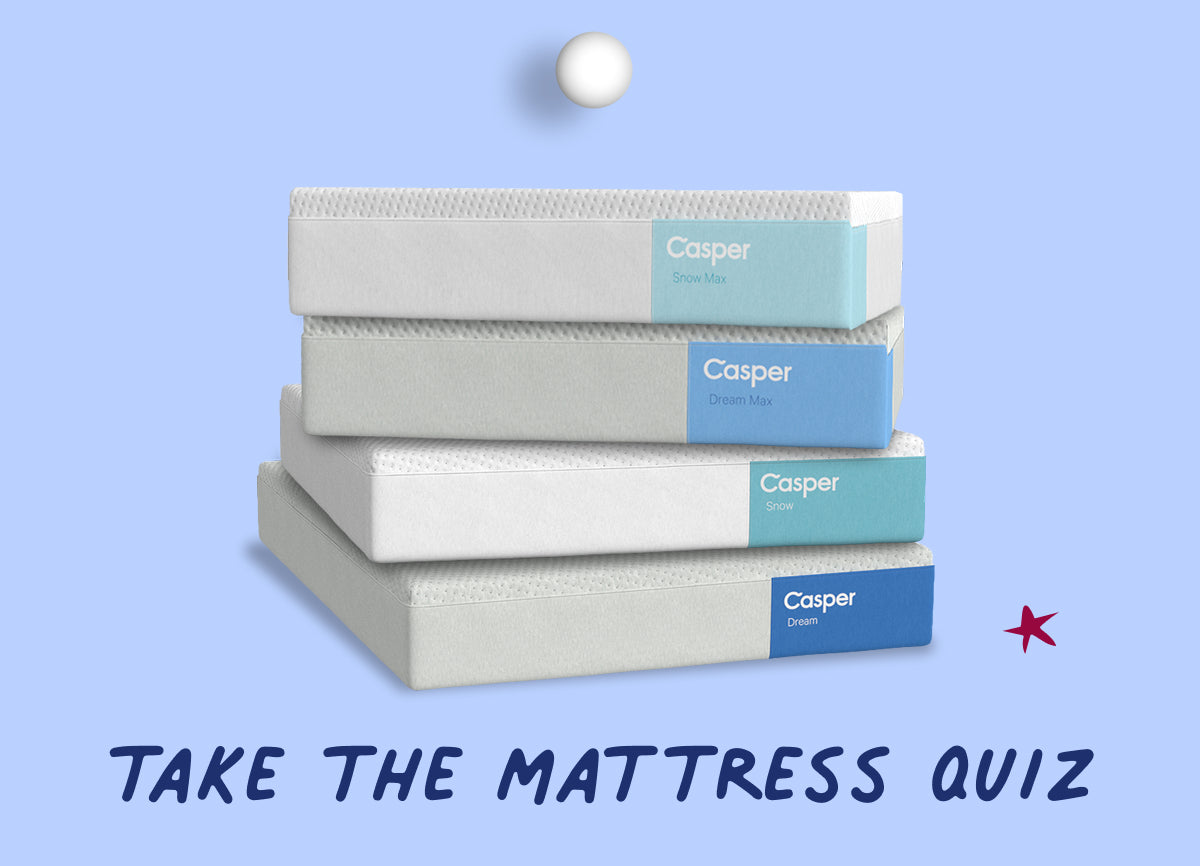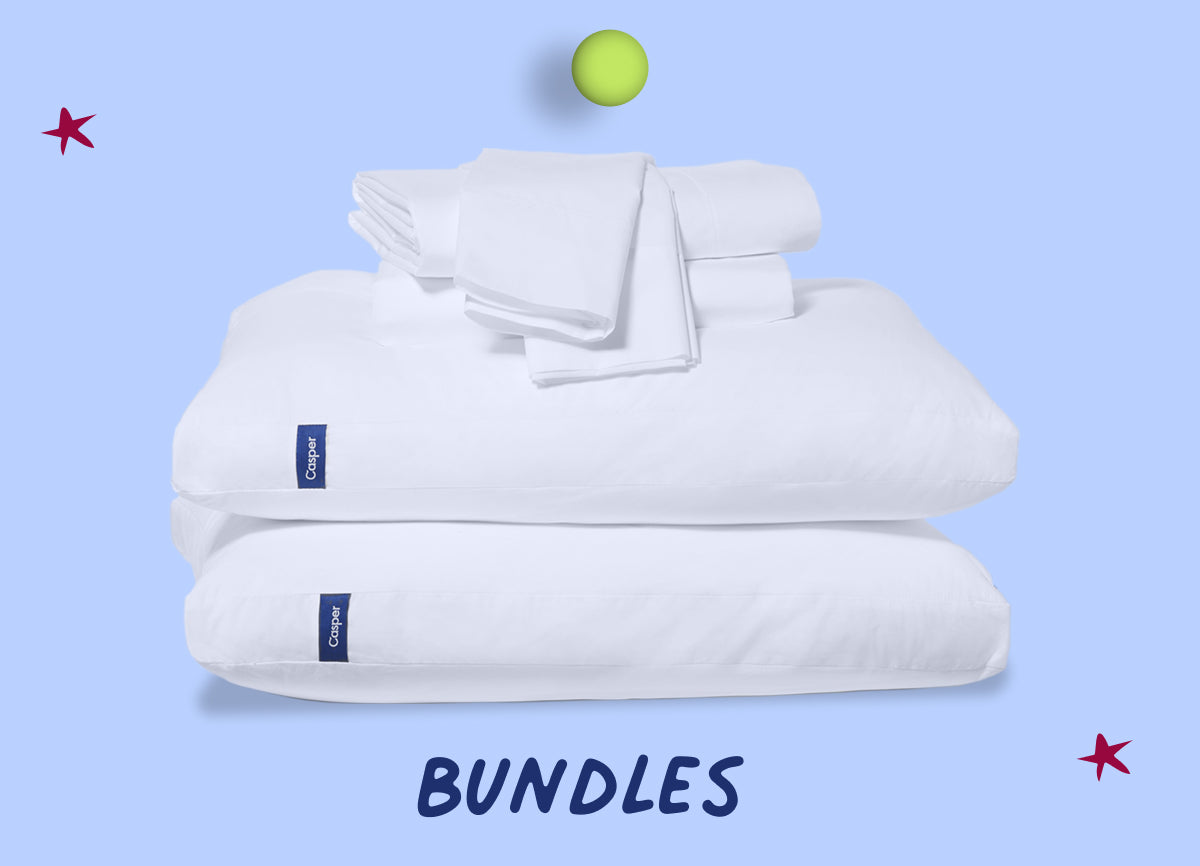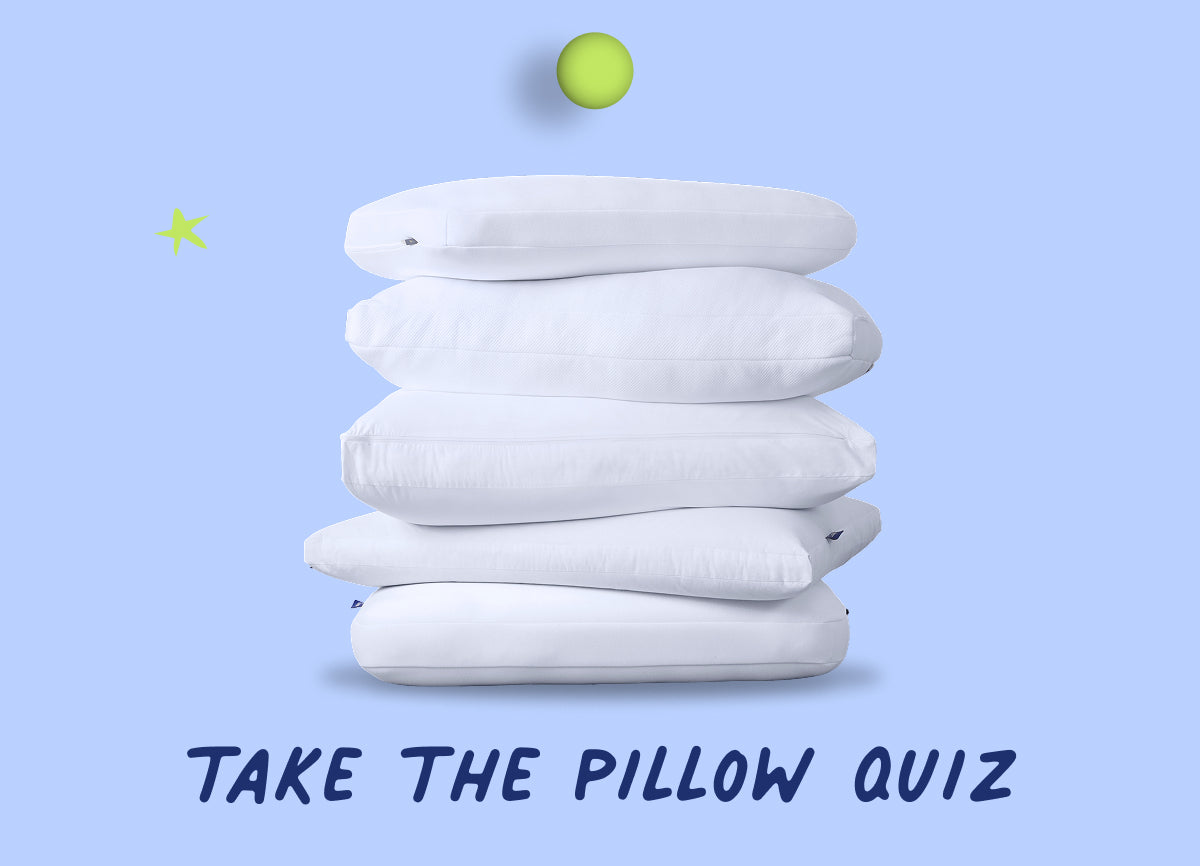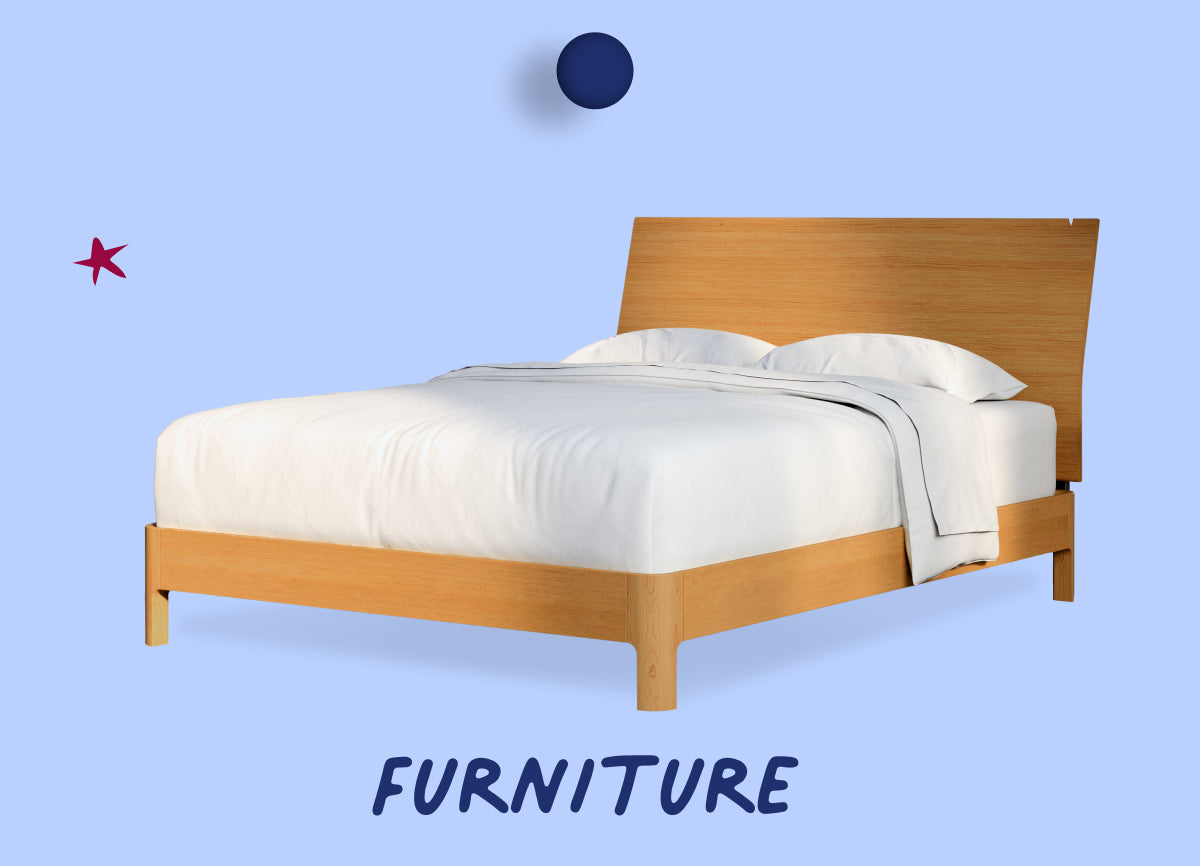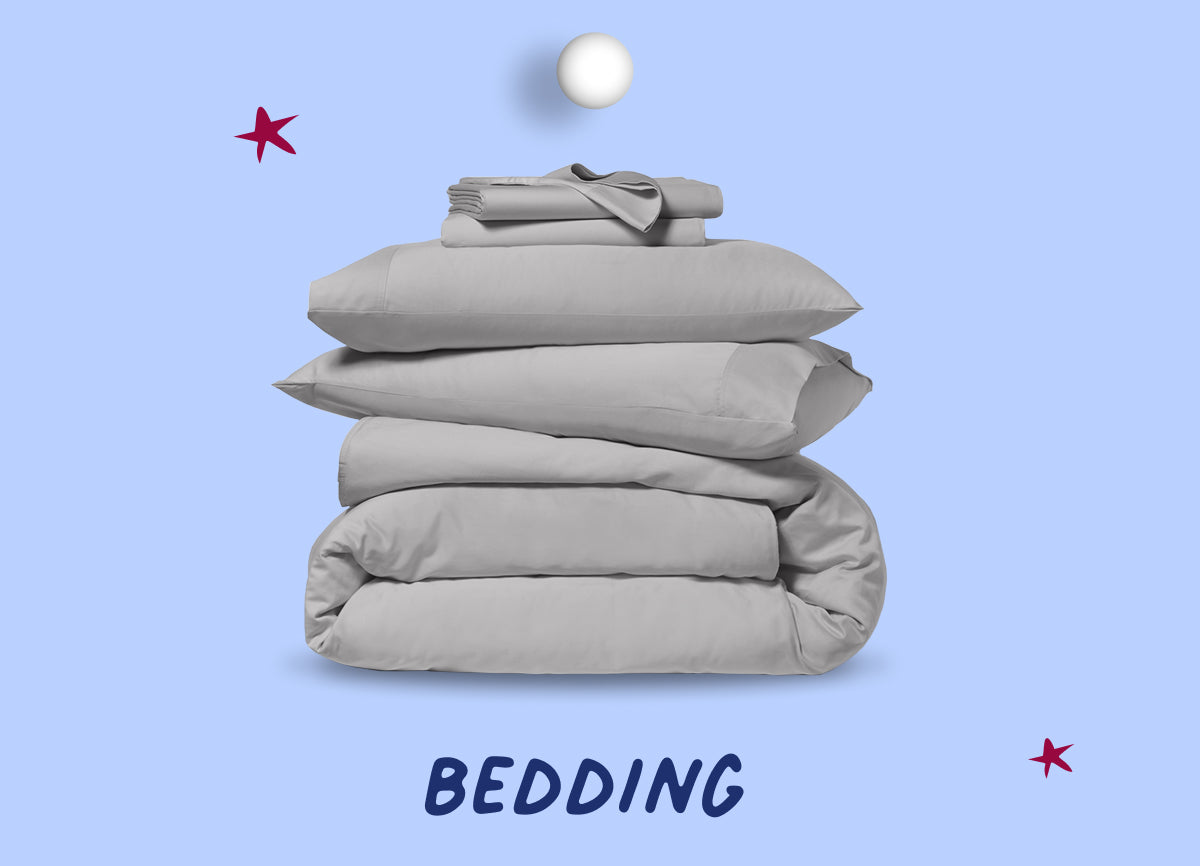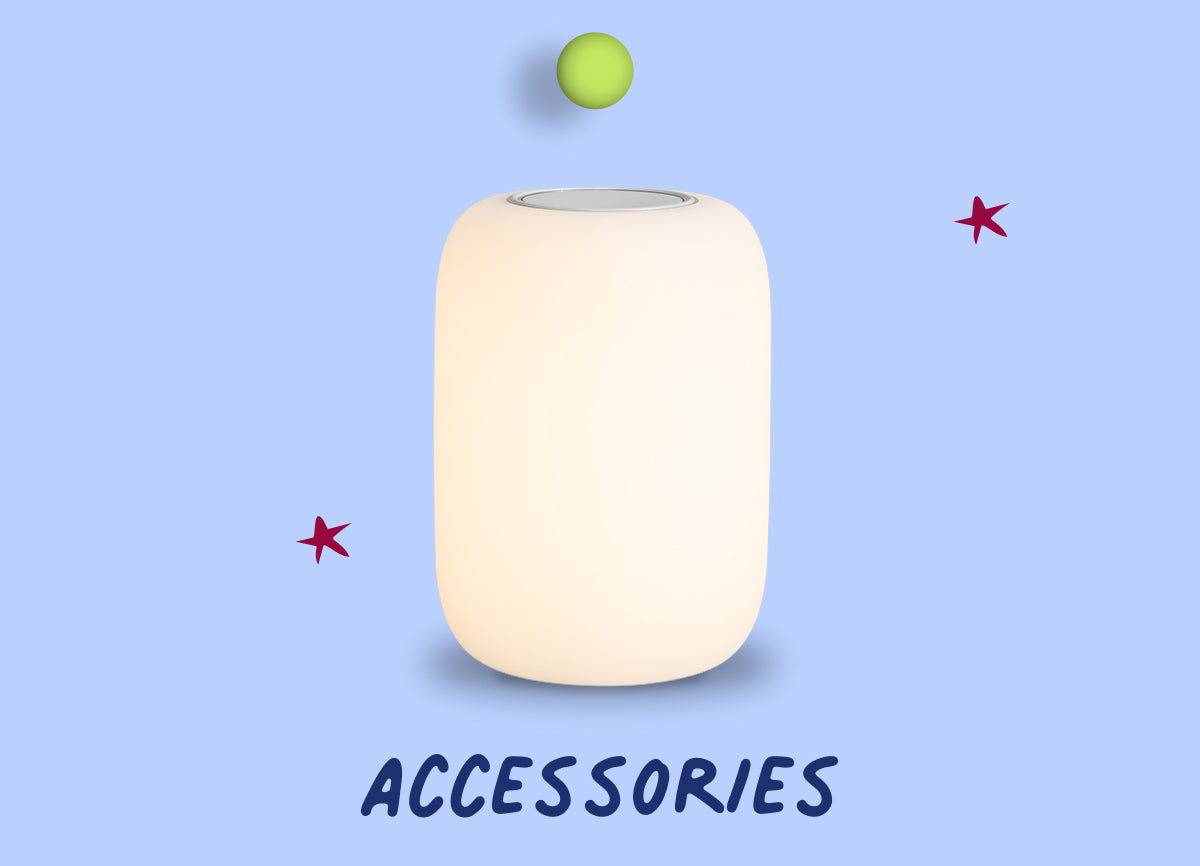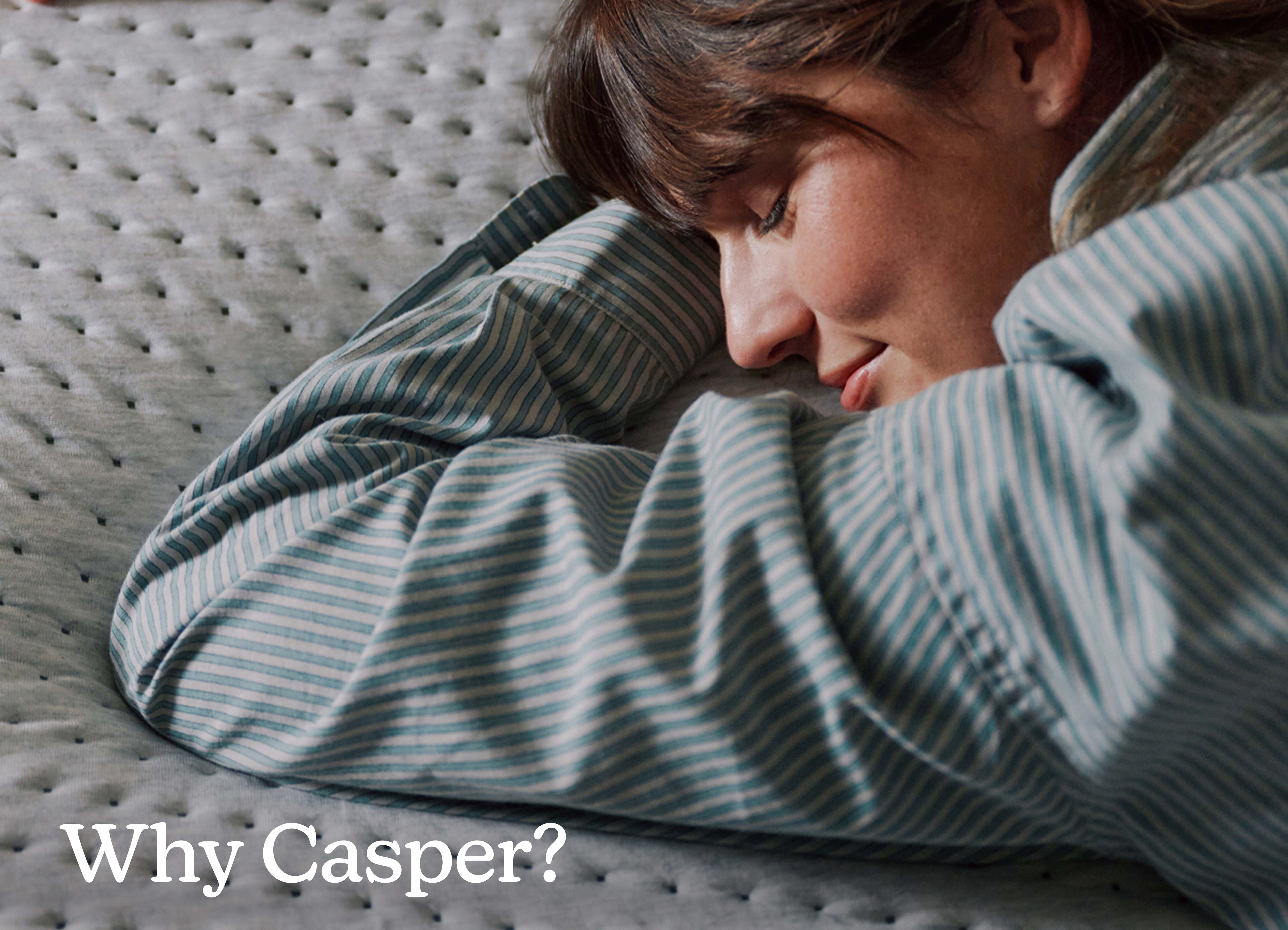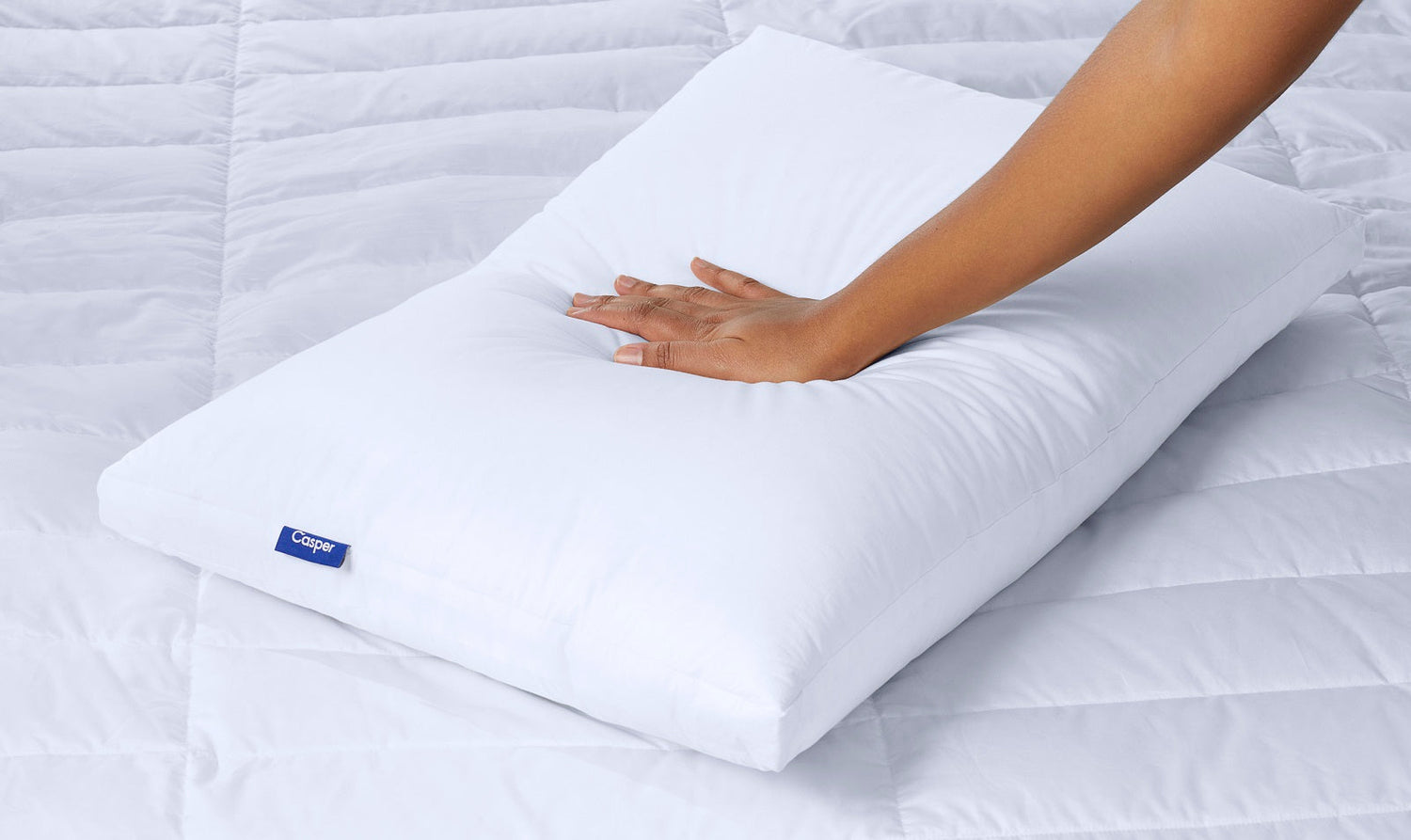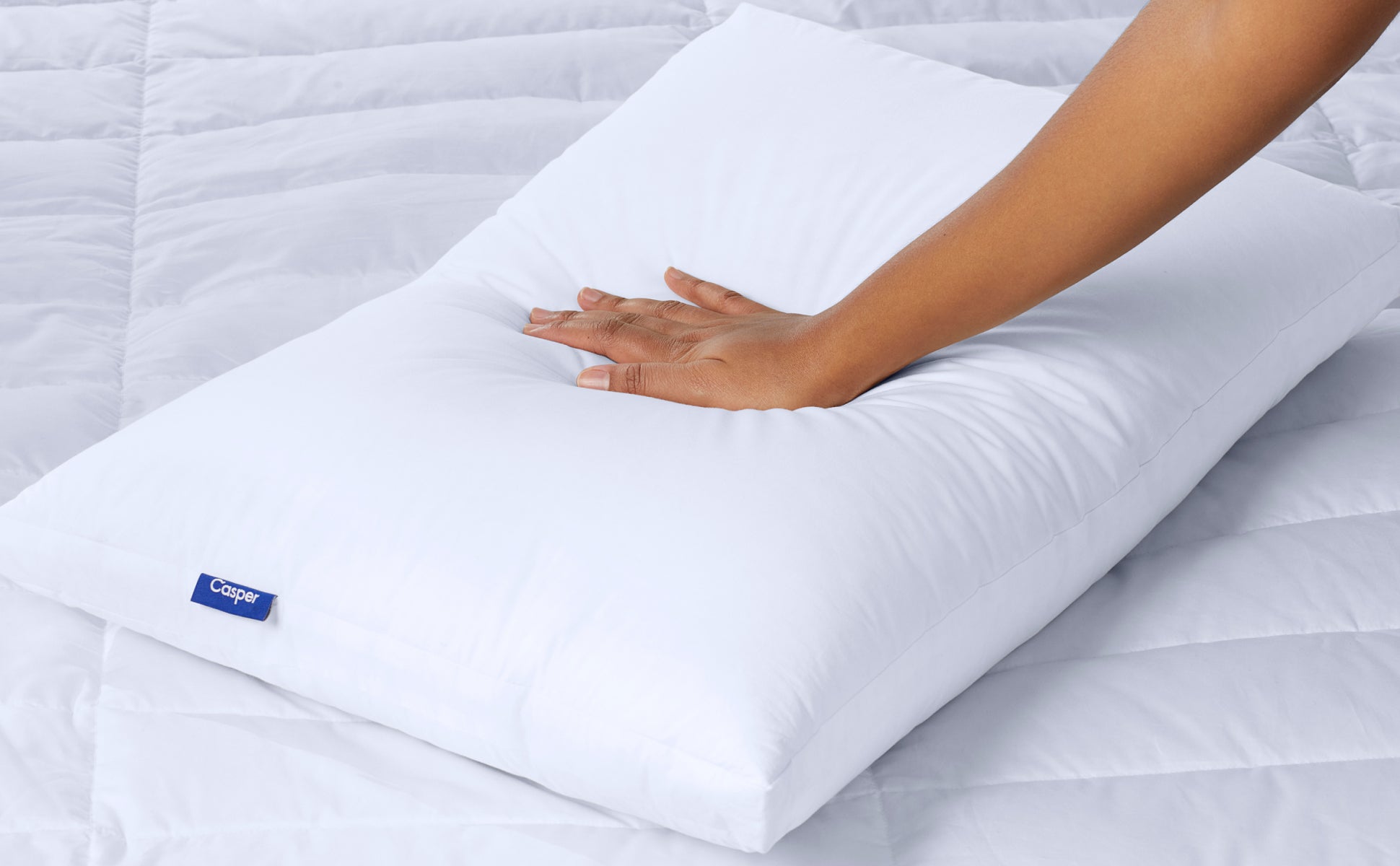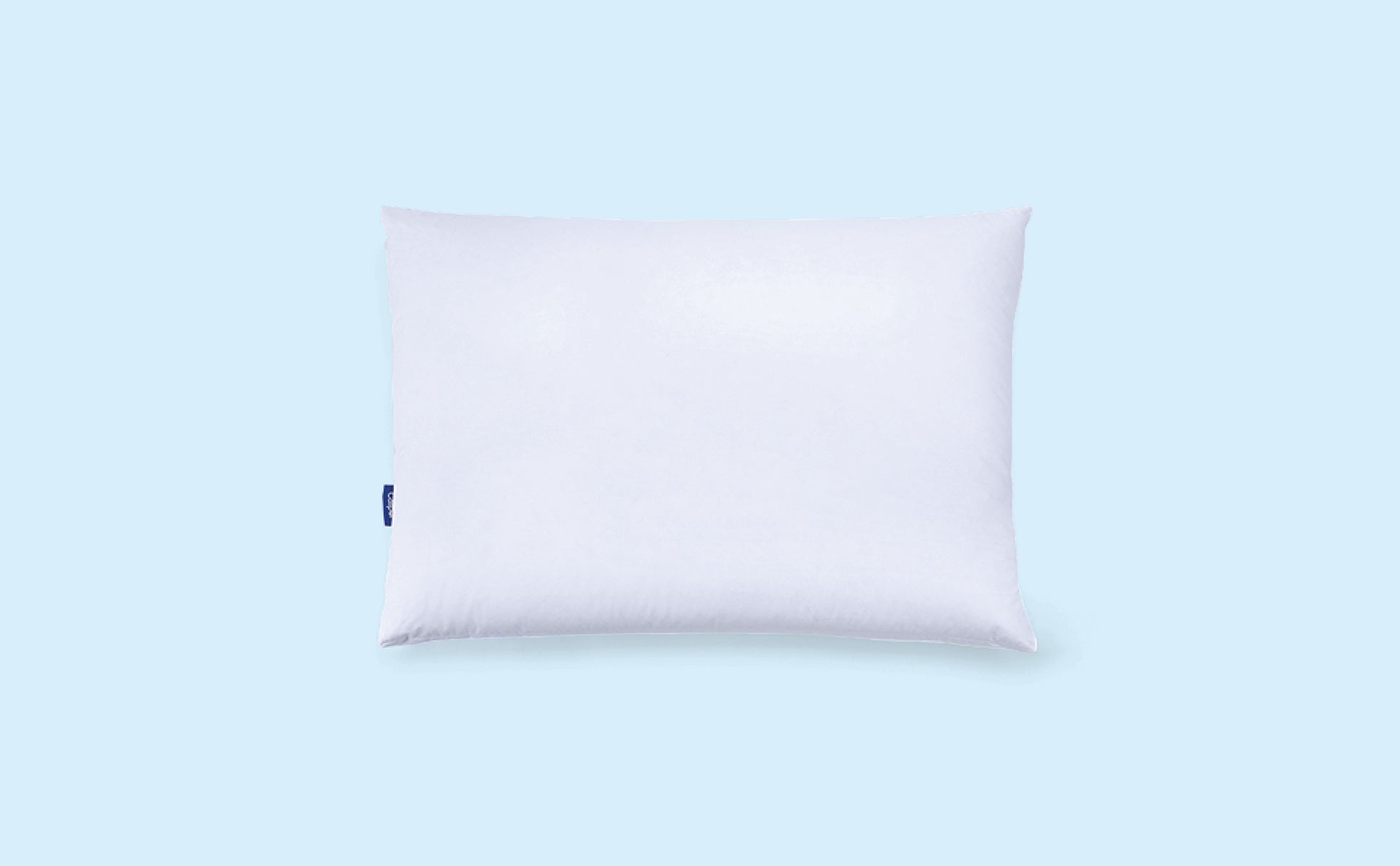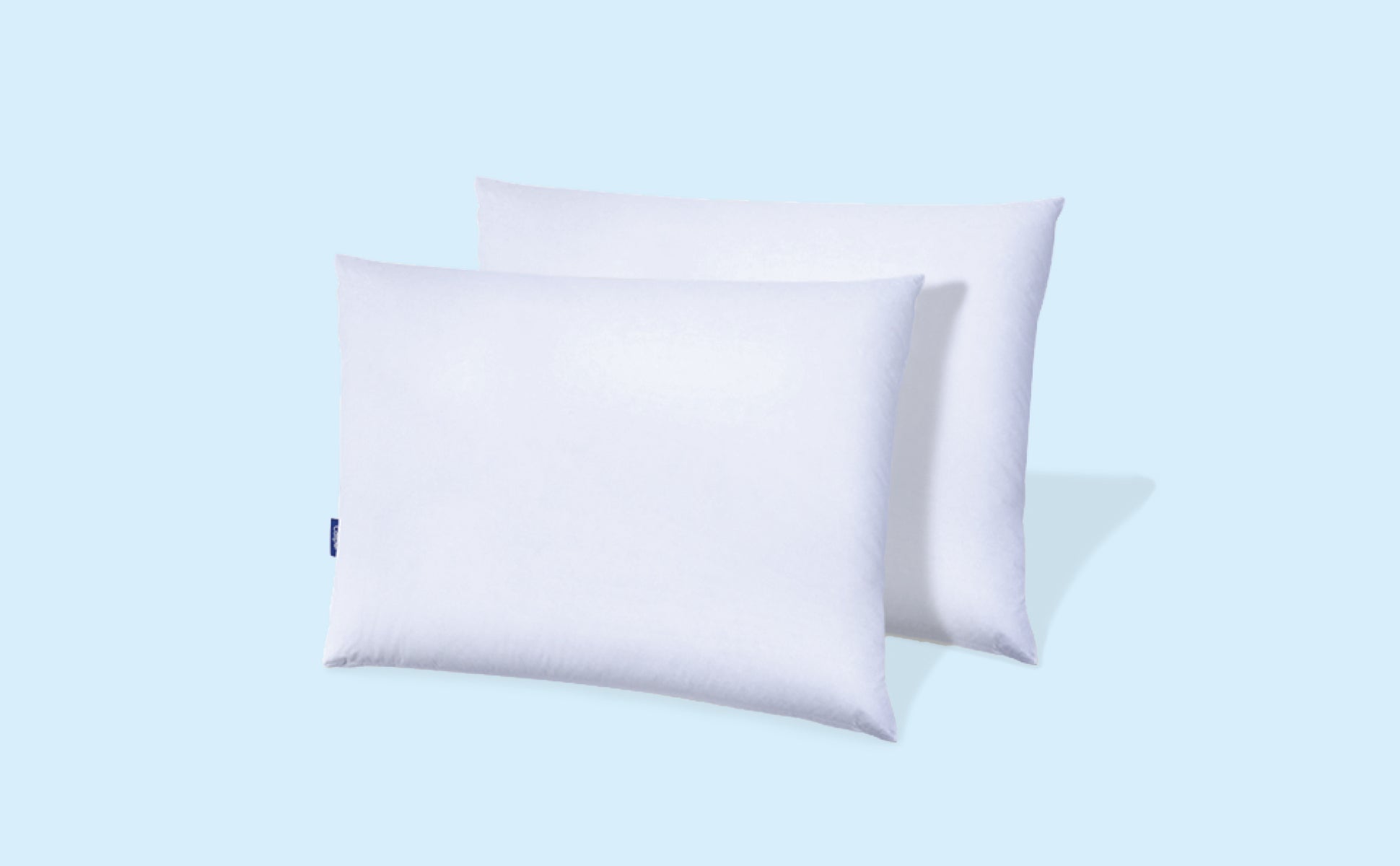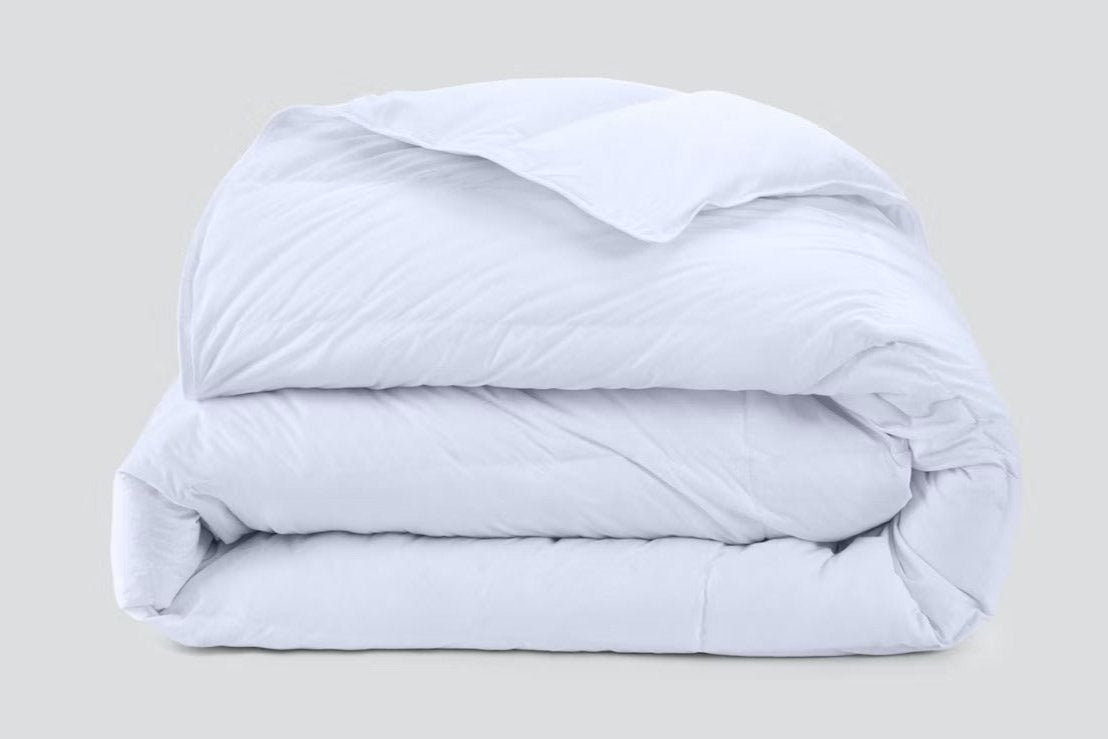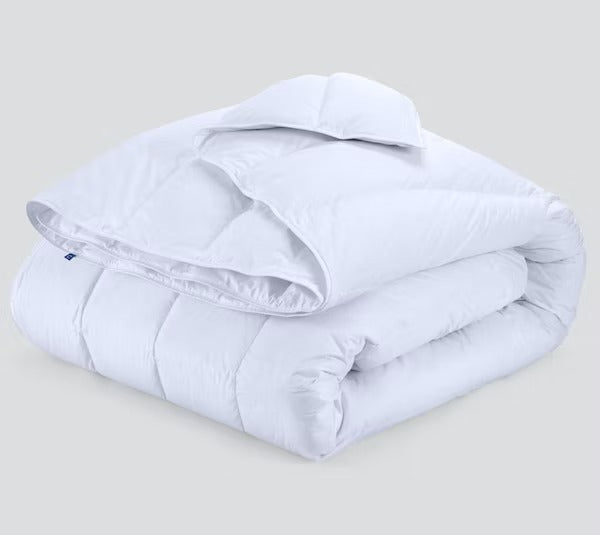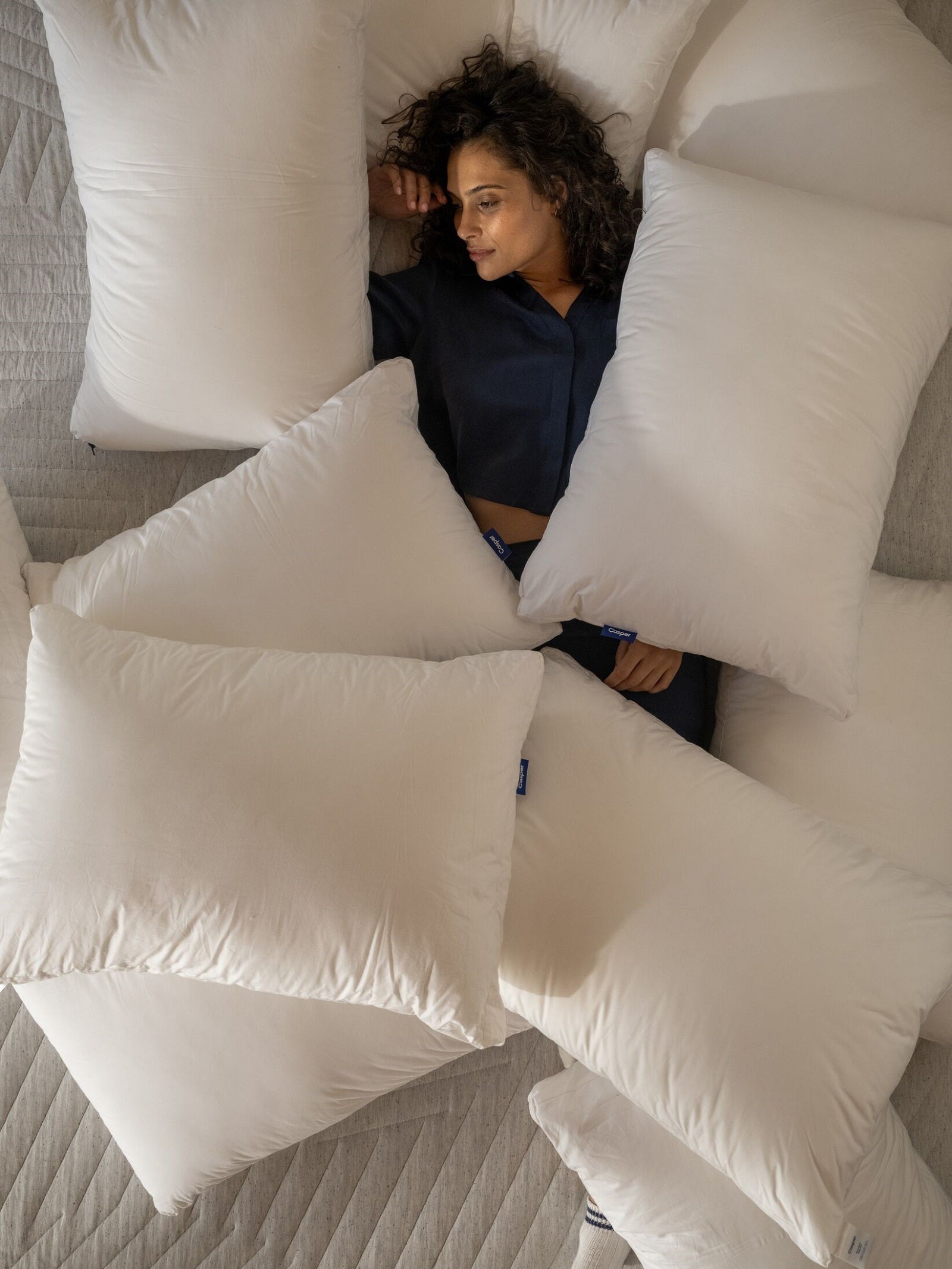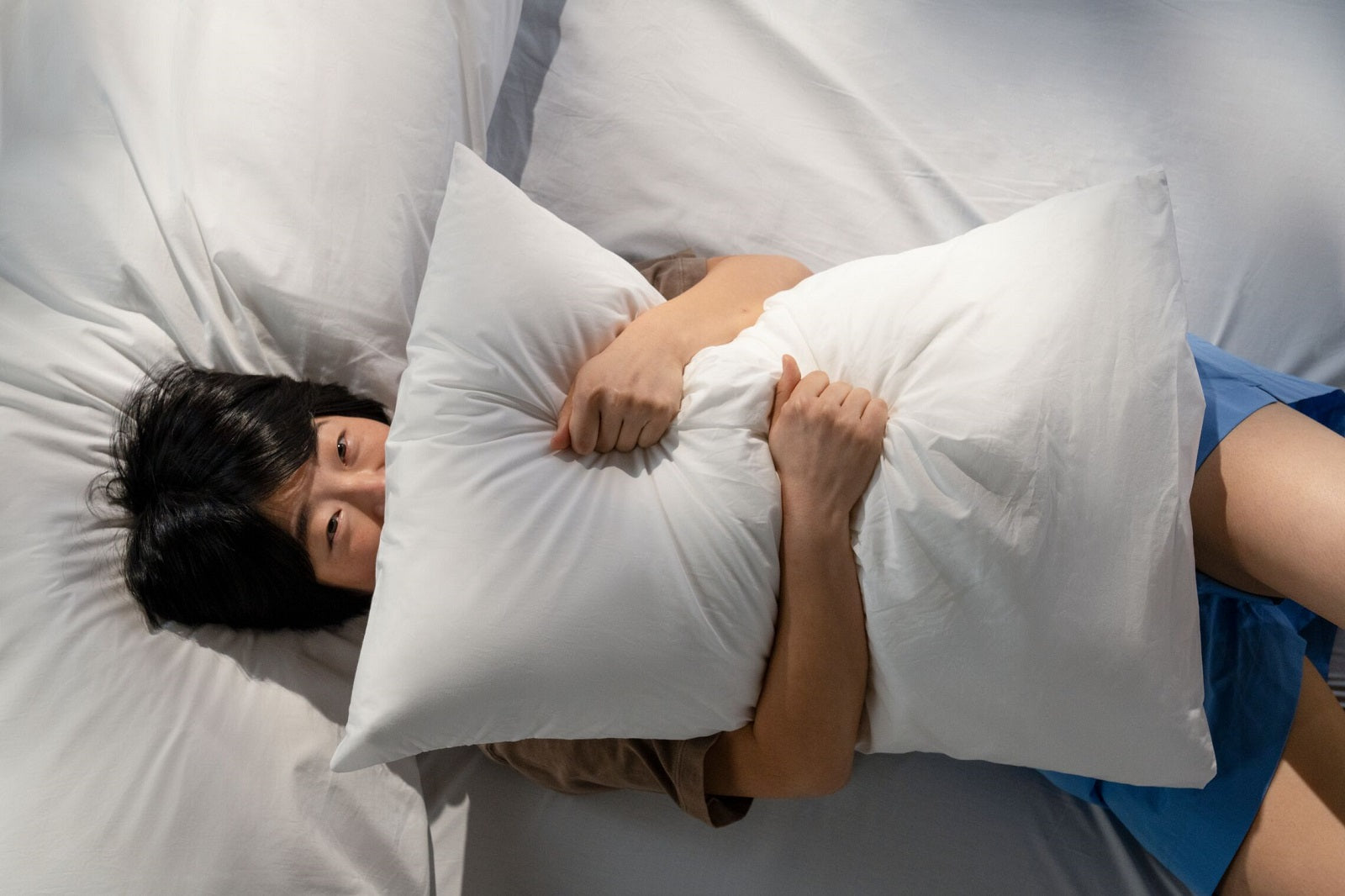Keep your down and feather pillows fully fluffed by washing them regularly in mild detergent and cool water. Dry on low or no heat settings.
Although synthetic pillows can deliver miraculous comfort and support, natural options, like down and feather pillows, provide heavenly softness and come with a built-in advantage: easy cleaning.
Want to learn how to wash down pillows and re-fluff their feather filling? Simply run your pillows through a washing machine’s gentle cycle, using a low-sud detergent, or hand wash them with warm water and mild soap.
If your pillows need a facelift, follow our detailed guide to achieve that freshly fluffed feel.
Understanding Down & Feather Pillows
Learning how to wash pillows starts with understanding the difference between down vs feather. Both make for splendid pillow stuffing, long adored by sleep connoisseurs.
What Makes Down and Feather Pillows Unique?
A down pillow contains fibers that grow on the belly of a goose, swan, or duck.1 These fibers fan out across the bird’s skin, regulating their temperature by retaining heat and allowing air to escape.1 This renders down fibers highly breathable — and as anyone who’s used to sleeping hot can attest, breathable material works wonders for night sweats.
So, are down pillows good? Down has a lot going for it when it comes to bedding. It’s:
- Exceptionally soft – It’s like an airy yet supportive cloud.
- Highly resilient – After compression, it readily resumes its original shape.
- Cozy and warm – It’s one of the finest insulations on the planet.1
Feathers, on the other hand, grow from birds’ backs and necks and connect to the skin with a quill.1 (You’ve probably seen characters in old movies writing with these.) Feathers offer supreme softness, but come with a few downsides:
- The quills can be pokey
- Thin dimensions necessitate frequent fluffing
- They don’t last as long as down pillows
Both styles offer marshmallowy softness and the ideal amount of support (without the assertive firmness of fillings like memory foam).
Why Proper Cleaning is Important
Have you ever watched birds splashing about in a birdbath? If so, you probably noticed the puffy texture of their freshly rinsed feathers.
This same phenomenon occurs when you wash your pillow. Dust and grime accumulate during sleep. This gunk seeps into your pillow’s interior over time, robbing the filling of its fluff. Some TLC brings its bounce back.
Anti- loft buildup can also trigger allergies. Dirty pillows make inviting locales for dust mites to set up shop. These pesky buggers cause symptoms like2:
- Sneezing
- Runny nose
- Coughing
- Itchy, red eyes
As their name implies, dust mites adore dust. Eliminating residue from your pillow sends a clear message: They’re no longer invited to share your sleep space.
But dust mites aren’t the only unwelcome guests your pillow might harbor—enter bed bugs. These tiny, nocturnal pests can sneak into the seams and fabric, turning your pillow into a hideout. While they’re more commonly found in mattresses, bed bugs in pillows can still disrupt your sleep, leaving you with itchy bites and irritation. Regular cleaning not only keeps your pillow fluffy and fresh but also reduces the chances of these creepy crawlies taking up residence.
Pre-Wash Preparation
Before embarking on the journey to pristine pillows, you’ll want to take a few preparatory steps. These help ensure a smooth cleaning process and optimal results:
- Check care label for washing instructions – Every pillow requires unique cleaning procedures. Check the tags or manufacturer’s website.
- Inspect for rips and tears – Feathers feel delightful inside your pillow, but they’ll wreak havoc if they escape into your washer. Check for any openings before washing.
- Gather necessary supplies – Pick up some detergent. You want a “gentle” and “low sud” variety. Also, ensure your washer can comfortably hold your pillows.
Dryer Balls: Essential Feather-Fluffing Tools
Feather and down has a tendency to “clump” as it dries. Since you’re not looking to sleep on a chunky pillow, it pays to have some dryer balls on hand. Usually made from wool, dryer balls tumble around the dryer with your bedding. As they do, they3:
- Absorb moisture
- Break up clumps
- Boost airflow
In a pinch, tennis balls can serve as a handy alternative.4
Step-by-Step Guide to Washing Down & Feather Pillows
Now that you’ve set up your space and gathered your supplies, let’s walk through how to wash feather pillows and uplift down filling.
Washing Down and Feather Pillows in a Machine
With machines, you can generally use identical settings to wash down and feather pillows. It’s also wise to limit your cycles to two pillows at a time to avoid jams and lopsided loading.
When it comes to temperature, cool or warm water delivers the best results, as hot water sometimes shrinks fabric.5
Once you’re ready to wash your pillows6:
- Load pillows in the washer – Stick with two pillows per load.
- Add your mild, low sud detergent – Go light — you don’t want to leave a residue.
- Select the “gentle” setting – Feathers and down require tender treatment.
- Activate a second rinse cycle – This helps remove lingering moisture and soap.
Then, kick back and let the washer send that dust and dirt packing.
Hand-Washing Alternative
If you lack access to a washer or simply prefer the manual route, you can also hand wash down and feather pillows. Do the same preparation as described above (like checking for rips). Then follow these steps7:
- Fill a tub with cold or warm water.
- Add a splash of gentle detergent and agitate the water until it dissolves.
- Submerge your pillows in the water and squeeze them to expel dirt.
- Extricate the pillow and rinse it under clean water.
- Squeeze out any lingering moisture. (You’ll probably need to do this multiple times.)
While hand washing takes longer, it will ensure your pillows stay safe during the washing process.
How to Dry Down & Feather Pillows
After their luxurious soak, it’s time to get your pillows toasty and fluffed. Like washing, drying is a relatively simple process.
Using a Dryer for Best Results
Generally, a clothes dryer does the best job. When your pillows emerge from the washer, carefully remove them and transfer them to the dryer.
As you do, give them a couple of gentle squeezes to force out any interior moisture. Avoid wringing them out, as this can distort or damage the filling.6 Then:
- Set your dry temp to “air dry.”
- Choose the “delicate” setting.
- Add dryer (or tennis) balls for clump prevention.
- Check pillows between cycles to gauge moisture levels and prevent clumping.
- Repeat until the pillows are completely dry.
Since mold and mildew wage war against your pillow’s health, you must completely dry your pillows before using them again. If you feel the pricklings of doubt, simply run them through another drying cycle.
Air-Drying Option
If you’d rather not use a dryer, it’s possible to air dry down and feather pillows. Simply hang them up on a clothesline (during dry weather) or lay them flat on a sunny surface.
Check them periodically to break up clumps and do a little hand fluffing.
Avoiding Common Drying Mistakes
Whichever method you choose, make sure that your pillows are truly dry before returning them to your bed — you don’t want to snuggle up with a mildewy pillow.
To test dryness, carefully pinch the corners and run your hands along the exterior.8> If you notice any damp spots, return it to its drying position. Even if the surface feels dry, damp spots may still lurk within.
If you sense clumping, or if you notice strong laundry odors, send it back to the dryer.

Maintaining Your Down & Feather Pillows Between Washes
To increase the longevity of your freshly washed and dried pillows, follow these best practices.
Use of Pillow Protectors
For an added layer of protection between washes, pillow protectors can help defend your down and feather filling from9:
- Oils
- Dust
- Allergens
These barriers slip over your pillow just like a pillowcase and feature microscopic pores that allergens can’t fit through. They’re the ticket to an extended lifespan.
Regular Fluffing to Maintain Shape and Loft
Even well-maintained down and feather pillows settle unevenly over time. To maintain a healthy shape, give them regular hand fluffings. This helps the filling regain its original form and keeps feathers from clumping.
By keeping your pillows clump-free, you also boost the filling volume and, by extension, pillow loft. If your pillow feels lower than it used to, a spruce-up may be in order.
Spot Cleaning Tips
Breakfast in bed — it’s one of life’s delights. But it can also increase the risk of coffee spills and ketchup smears marring your pillow’s pristine surface.
Instead of running a full wash, you can easily spot-treat minor stains by following these steps10:
- Add a dash of mild detergent to a bowl of water.
- Dip the corner of a cloth into the mixture.
- Pat the stain gently until it vanishes.
- Rinse with a fresh cloth dipped in clean water.
You can perform this targeted treatment for any minor stain, including sweat, makeup, toothpaste, and more.
When to Replace Your Down & Feather Pillow
Down and feather pillows can provide many nights of peaceful slumber. But all good things eventually come to an end. That goes for pillows, too.
Signs Your Pillow Has Reached the End of Its Life
Feeling like your pillow simply isn’t the same anymore? Look for these dead giveaways that it’s time to replace your pillow:
- Stubborn dirt – If your pillow remains stained or smelly despite regular cleanings, it’s probably beyond saving.
- Loss of shape – A once well-defined pillow that now looks and feels like a sack of potatoes? Probably on its way out.
- Lack of comfort – Sometimes it’s not them, it’s you. Physical changes or a new bed can change your support needs, meaning a fresh pillow is in order.
While it’s hard to say goodbye to a trusty pillow, it allows you to find a new one with even greater support.
Expected Lifespan of Down and Feather Pillows
But how often should you replace pillows? With down and feather pillows, you can typically anticipate a 2-3 year run.11 But certain measures can extend your pillow’s life, such as:
- Using pillow protectors
- Giving them regular washes
- Fluffing and airing out frequently
If you’re a fan of using multiple pillows, it pays to swap out your “main” one now and then. This helps them wear evenly.
Why Casper Down Pillows Are Built to Last
When it comes to down and feather pillows, regular care and tending go a long way toward ensuring nightly vacations to Snoozeville. But even more important than frequent washing? Expert design and construction. At Casper, that’s precisely what we deliver.
Our famous Down Pillow offers superior comfort alongside a machine-washable build for easy perk-ups. If you’re up for testing the world beyond down, look no further than the Hybrid Pillow, our cushy fusion of foam and fiber fillings.
Choose sleep products that last for the long haul. Discover Casper today.
Sources:
- Differencebetween.net. Difference Between Down and Feathers. https://www.differencebetween.net/language/words-language/difference-between-down-and-feathers/
- Mayo Clinic. Dust mite allergy. https://www.mayoclinic.org/diseases-conditions/dust-mites/symptoms-causes/syc-20352173
- The Spruce. What Is a Dryer Ball and How Do They Work?https://www.thespruce.com/what-do-dryer-balls-do-6741931
- Smart Sheep Dryer Balls. Tennis Balls vs Wool Dryer Balls for Laundry. https://www.smartsheepdryerballs.com/blogs/laundry/tennis-balls-vs-dryer-balls?srsltid=AfmBOopy69ZEtN-vrCPNJDZ6mraNAjPZpRwrtmojiwpUa8VuKh1nmDQR
- Laundry Sauce. Does Hot Water Shrink Clothes in the Washer? https://laundrysauce.com/blogs/news/does-hot-water-shrink-clothes?srsltid=AfmBOooZxuKv-x16CevKOp1NGmpxPxT5HVVmA_eBvFruiAWtvhSojyN4
- The Spruce. How to Clean and Care for Feather Bed Pillows. https://www.thespruce.com/wash-and-clean-feather-bed-pillows-2146357
- Apartment Therapy. How To Wash a Pillow by Hand or Washing Machine.https://www.apartmenttherapy.com/how-to-wash-a-pillow-42606
- Clotheslyne. How to Clean & Dry Your Pillows in a Washing Machine. https://www.clotheslyne.com/blog/cleaning-pillows-in-washing-machine/
- Consumer Reports. Do You Need a Pillow Protector? https://www.consumerreports.org/home-garden/pillows/do-you-need-a-pillow-protector-a1108240022/
- Clotheslyne. How to Properly Cleaning Your Decorative Pillows. https://www.clotheslyne.com/blog/how-to-wash-a-decorative-pillow/
- Sleep Doctor. When Should You Replace Your Pillow? Signs of Wear and Tear. https://sleepdoctor.com/pillow-information/when-should-you-replace-your-pillow/

